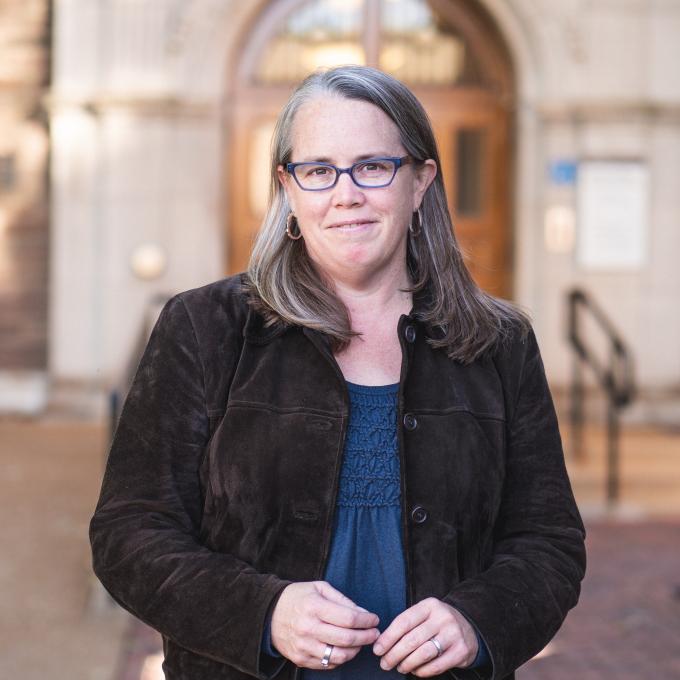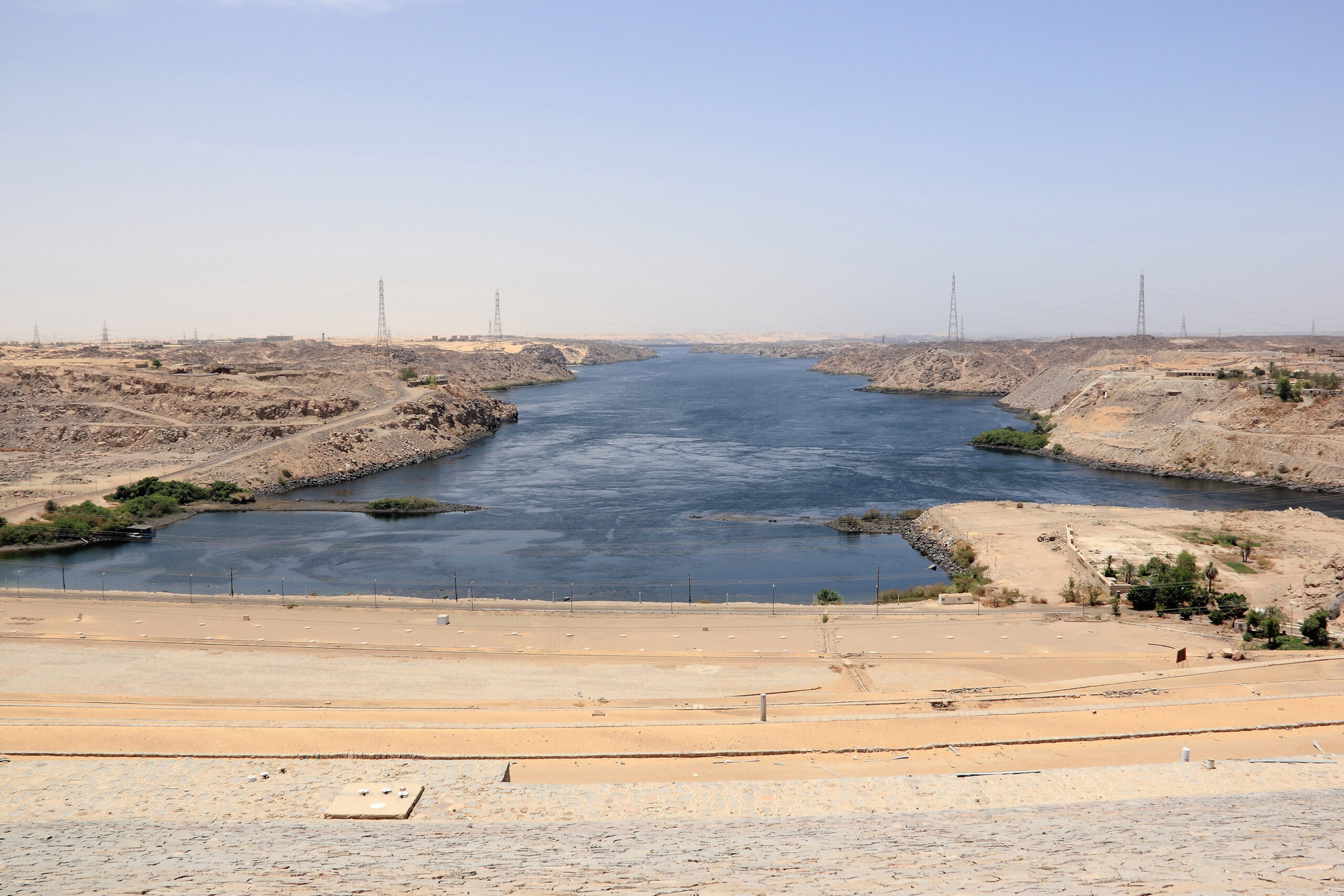The Aswan High Dam cuts across the world’s longest river, the Nile, where it enters Egypt near its arid border with Sudan. With Soviet aid in the 1960s, Egyptians built the enormous rockfill dam, whose reservoir forcibly displaced one of the country’s longstanding communities from the south in Nubia.
While the dam generated power, regulated seasonal flooding, and likely protected Egypt from the extreme droughts experienced by East Africa in the late 20th century, its collateral costs on Egypt’s ecology and people have been extraordinarily high.
“The dam finalized the destruction of Nubia in Egypt and northern Sudan, a region that had been under threat from irrigation infrastructures since the early 20th century,” says Nancy Y. Reynolds, associate professor of history in Arts & Sciences at Washington University. “Like many other dams, it also had pernicious downstream effects. In this case, a rising water table damaged urban sewer systems, ancient monuments, and agricultural fields. A lack of rich sediment in the water drove high artificial fertilizer use and wiped out fish populations. The reservoir has even altered weather patterns at Aswan, bringing rain and possibly new seismic activity to the region.”
“What many people don’t realize is that the Nile provides 96 percent of Egypt’s water, since the country receives very little rain. It is essentially the country’s only river, and this makes the Aswan High Dam unique as a hydraulic infrastructure,” Reynolds adds. “While other countries have built multiple dams on their many territorial rivers, only the Aswan High Dam impounds all a nation’s water. As a result, people have long worried that failure of the Aswan High Dam could flood all settlement in Egypt.”
Reynolds, also affiliated with the departments of Jewish, Islamic, and Middle Eastern Studies and Women, Gender, and Sexuality Studies, is documenting Egypt’s construction of the Aswan High Dam for her second book project, provisionally titled, “Stone by Stone: How the Aswan High Dam Quarried Postcolonial Egypt, 1956-1973.”
The largest human-engineered rockfill structure at the time, the dam pioneered key design techniques, Reynolds says. They included an enormous grout curtain anchoring to the unstable riverbed; the use of sand sluicing against received theories in soil mechanics; the world’s second largest reservoir in one of the hottest and most arid environments; and the first extensive salvage campaign, which established UNESCO’s World Heritage program and challenged Egypt’s postcolonial political sovereignty.
Funded by the American Council of Learned Societies, Reynolds’s research took her into more than 10 archives across three continents. She analyzed the material conditions and effects of the dam’s construction as well as people’s engagement with it through forced migration, work, tourism, disaster anxiety, and literary and artistic representation.
Her primary sources include ministerial correspondence, technical reports, oral histories and memoirs, dig dairies, and an unusually rich corpus of Arabic literature and film. These sources allow her to link official and technical depictions of the dam to their reception among everyday people and the workers who built the dam.

Mellon-funded initiatives spur new research
To write the book, Reynolds has also expanded the scope of her research methodologies in the environmental humanities through two Mellon-funded initiatives: a Mellon New Directions Fellowship that took her back to the classroom at Washington University in 2017-18 to study geology, botany, zoology, and environmental biology for an ongoing research project, “Heat: Recent Egyptian Histories”; and a Mellon Sawyer Seminar on the material, political, and ecocritical dimensions of spaces considered wastelands, which she has been studying with Dr. Anne-Marie McManus since 2014. While the Mellon Sawyer Seminar will close at the end of September 2023, the two professors are continuing their research partnership, which includes a film collaboration.
Reynolds has drawn on her Mellon New Directions grant training to develop a series of projects about the environmental history and plants of southern Egypt, especially Aswan and historic Nubia, and the Saharan and Arabian deserts more broadly. This research took her in March 2023 to Morocco, where she studied date palm farming, arid heat-adapted ecosystems, and oasis irrigation.
“The Mellon New Directions grant is a very generative funding initiative,” Reynolds notes. “For mid-career scholars who have a research question their doctoral training didn’t equip them to answer, the program allows them to acquire new capacities and skills so they can undertake that research.
“I was trained as a socio-cultural historian, and my scholarly interest in understanding heat grew from my earlier work on material structures, space, and fire in Egypt. My first book, “A City Consumed: Urban Commerce, the Cairo Fire, and the Politics of Decolonization in Egypt,” examined commodities such as raw cotton, socks, and shoes, as well as stores and streets, to argue that Egyptian efforts to unyoke the nation from its colonial past were deeply structured by the particular material structures of space and goods. Although in that book I charted the social and material effects of a large urban fire (charred buildings in particular), I was unaware of how heat circulated less visibly in the city. When I began to work on the Aswan High Dam as a material object of a completely different scale, I soon realized I needed the skills of environmental history to understand the dam’s effects on its landscape.”
“A City Consumed” (Stanford University Press, 2012) won the 2013 Roger Owen Book Award from the Middle East Studies Association.
Between Sand and Sea
Reynolds teaches broadly about the modern Middle East, including courses on women and revolution, colonial cities, shopping and consumption, and Egyptian law and revolution. Her training in environmental history led her to develop a new course, “Between Sand and Sea: History, Environment, and Politics in the Arabian Peninsula,” which she will teach again in fall 2023.
Reynolds elaborates on her approach to developing the course:
I wanted to bring my learning in environmental history to my classroom and apply these methods to my teaching of the modern Middle East. I focused on the Arabian Peninsula, rather than Egypt, to keep my own research at a slight remove, to make use of a really dynamic field of studies on the Arabian Peninsula, and because the region has often struggled against views of it as empty – a depiction that has led to both unwanted intervention and disregard from outsiders.
Although today primarily associated with oil, the Arabian Peninsula was for most of its history defined by water: its surrounding seas, its monsoon-driven winds, and its lack of water in its vast interior deserts. As home to the major holy cities of Islam and a key source of global oil, the region has played an important role in the Western European and North American imagination and state policies.
Despite being relatively sparsely populated, the peninsula hosts millions of believers each year on the annual Muslim pilgrimage. It also has been the site of major wars and military occupations by European, American, and other Middle Eastern countries for much of the 20th and 21st centuries: an outpost of the Ottoman Empire, center of British colonialism and (at Aden) an axis of its global empire, location of Egypt’s “Vietnam” (its long war in Yemen in the 1960s), the Gulf Wars I and II, and the recent wars in Yemen, to name just a few of the major conflicts.
The region is often depicted as unchanging until caught up by the influx of massive oil wealth, and it is frequently characterized as a place of contradictions: home to some of the world’s largest skyscrapers and the most inhospitable and largest sand desert in the world, known as “the Empty Quarter”; the location of crucial American allies and yet the home of al-Qa’eda founder Usama Bin Laden.
In the course, we examine instead the development of the peninsula historically to understand these contradictory images and the complex ways that human history and the environment are intertwined.
– Nancy Y. Reynolds
